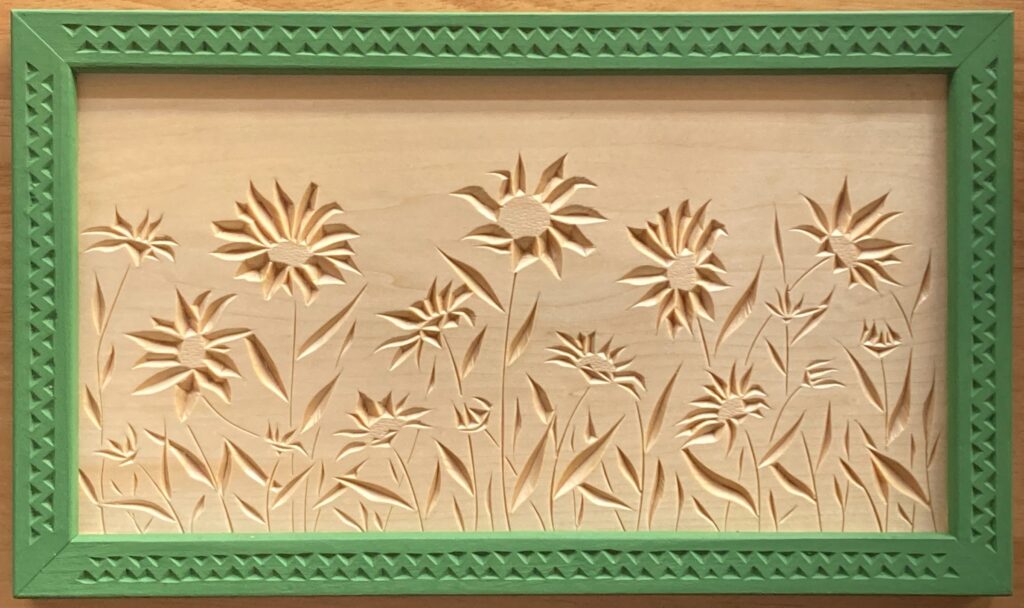
Recently, inspired by a woodcut of a field of sunflowers, I went looking for reference photos to do a carving. What interests me aesthetically about sunflowers—about any flowers, really—is their motion, the aliveness of the blossoms, the variation in form within a single species. That fits well, I find, with my chosen medium, chip carving, which allows me only crisp lines and a limited range of textures to work with. No fields of gold and green, no variation in tone, no cross-hatching, no broad swaths of anything except uncarved wood. If I don’t vary the forms, I wind up with something that looks flat.
What that means in practice is that while one perfect thing may be aesthetically pleasing, if I’m going to put several of them together, it’s their imperfections that make them visually distinct, and therefore interesting. Consider Van Gogh’s sunflowers, which as he continued to paint them grew less round, less consistently formed, their oddities and uniquenesses more exaggerated.
Now, ideally, I’d go out and find a field of sunflowers to draw. Somewhat less ideally I’d buy a bunch and stick them in a vase, as Van Gogh did. But I’m jumping the season a bit, so I went out on the internet.
Most of the photographs I found of sunflowers were remarkably similar. Even the flowers within individual photographs were remarkably similar: round, large-headed, even-petalled, face-forward. Granted that sunflowers do notoriously face the sun, granted that a photographer is likely to capture them with the sun at his back, I was unlikely to see them from multiple angles in the same shot. But why are they all so perfect?
My first thought was that some of the photos were AI-generated, or at least filled out with Photoshop. My next thought was that far too many photographers have shallow aesthetics and seek out uniform perfection—and if they don’t, their clients do. But consider: if you found a field of sunflowers to photograph, it would have been planted by someone: in nature, sunflowers tend grow amid lots of other less vivid things, like grass. The field would have been planted in one kind of seed, at one time. That seed would come from flowers bred for perhaps hundreds of generations either for consistent beauty or to maximize seed production. Uniformity is the goal of modern agriculture, because modern agriculture is an extension of the industrial revolution. You don’t need AI to make pictures as boring as the ones I was looking at; far older technologies have gotten us there.
I read a great deal of huffing and puffing about how transformative AI is or will be. What we ought to be concerned about is the likelihood that it will merely extend what we’re already doing. That, I fear, will be bad enough.
But back to the art. Eventually I found a photo of a stand of Pecos sunflowers, also known as paradox sunflowers because they grow in spring-fed patches of southwestern desert. They are wild, rangy things, with more petal than seedhead: exactly what I wanted. And some people who photograph them—mostly amateurs, taking snapshots—don’t know enough not to appreciate their wildness.
What I carved doesn’t look like Pecos sunflowers, particularly; it only looks, I hope, a little bit wild. Which is not an easy thing to do with a chip-carving knife, let alone a traditional one.
In the end, I realized that merely by thinking of “a field of sunflowers” I had already bought into a kind of cultural uniformity. What I want is a ditch full of black-eyed Susans, and next time I’ll go looking for one.